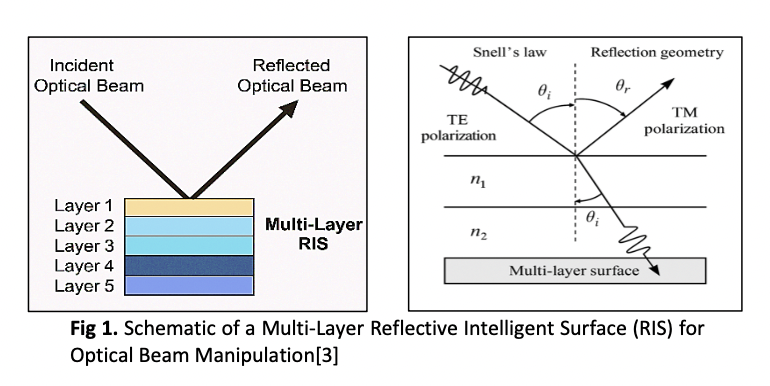Performance of a Passive Multilayer Optical RIS for Tropical FSO Links in Malaysian Rain and Humidity
Keywords:
Passive RIS, Free Space Optic (FSO), Malaysia weather, BER and SNR, MATLAB SimulationAbstract
Free-space optical (FSO) backhaul promises fibre-like capacity and low latency, but its usable range in practice is constrained by geometric spreading, misalignment loss, and severe tropical weather such as humidity and heavy rain. This work designs and evaluates a purely passive, five-layer optical reflective intelligent surface (RIS) and quantifies how it affects link sustainability under Malaysian atmospheric conditions. The RIS is modelled as a multilayer dielectric or semiconductor or metal stack, and its angular reflectance is obtained using Fresnel coefficients and Snell’s law for s- and p-polarized light, together with a transfer-matrix formulation for multilayer interference. The resulting passive surface is then embedded into an FSO link model with coherent QPSK reception. We simulate received optical power, effective SNR, and BER versus distance (0.5–10 km) under three tropical cases: clear/dry air, high humidity (>80% RH), and heavy rain representative of Malaysian convective downpours (>100 mm/h). Results show that, in clear or humid air, the passive RIS maintains high reflectance (>0.9 linear), supports SNR >10 dB out to multi-kilometre ranges, and achieves BER <10⁻⁶ for coherent QPSK, indicating carrier-grade performance. Under heavy rain, however, added attenuation drives received power down by >30 dB at 10 km, forcing SNR below 0 dB beyond ~5 km and causing BER to exceed 10⁻². We also show that sub-degree pointing errors at the RIS can introduce tens of dB of coupling loss, highlighting alignment as a critical design factor even without turbulence. Overall, the study provides a quantitative baseline for passive optical RIS deployment in tropical FSO links and identifies rain, not humidity, as the dominant barrier to long-distance reliability in Malaysian conditions.








